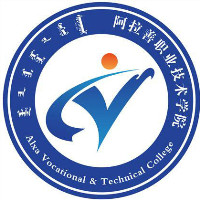Alxa Vocational and Technical College was approved by the People's Government of the Autonomous Region in January 2011. It was formed by the merger of 8 schools including the former Radio and Television University, Normal School, Health School, Technical School, Inner Mongolia Radio and TV University Branch, Zuoqi Vocational School, Development Zone Vocational High School, and Amateur Sports School. full-time general higher vocational colleges. In 2023, the secondary vocational school resources of the League were integrated, and the secondary vocational department of the college, Youqi Vocational Education Center and Eqi Vocational Middle School were merged to form Alxa League Secondary Vocational School, and the college implemented group school management. The college adheres to the school-running philosophy of "based on locality, people-oriented, advocating taste, and highlighting characteristics" and the school-running positioning of "based on Alxa, serving Inner Mongolia, taking root in the northwest frontier, and building a high-level vocational college with distinctive characteristics". The development path of "special, special and excellent" is to solidify the main line of the consciousness of the Chinese nation's community, focus on serving the "two major events", focus on the key industrial chains of the autonomous region and Alxa and social undertakings in border areas, and benchmark the "double high" We have adhered to school construction standards, constantly optimized the professional structure and layout, and actively promoted the "troika" of full-time academic education, adult continuing education, and social training in secondary and higher vocational schools to go hand in hand, forming a professional setting and layout that is compatible with the industrial structure of the alliance and surrounding areas. layout. The college currently has two campuses, Bayanhot and Wusita, covering a total area of 871 acres. It has jurisdiction over 8 general party branches and 25 party branches, and has 6 teaching departments including the Department of Medical Nursing, Department of Economic Management, Department of Art, Department of General Aviation, Department of Mechanical and Electrical Engineering, and Department of Chemical Engineering. The Ministry of Continuing Education, the Department of Basics, Six teaching auxiliary departments including the Physical Education Department, Training Department, Network Information Center, Scientific Research and Technical Service Department, and the Party and Government Office, Organization and United Front Work Department, Personnel Department, Propaganda Department, Discipline Inspection Department, Planning and Finance Department, Academic Affairs Department, and Logistics and Security Department , Admissions and Employment Office, Student Affairs Office, Youth League Committee, Trade Union and other 12 administrative departments. There are currently 8,473 enrolled students, including 5,088 full-time students (3,371 higher vocational students, 1,074 secondary vocational students, and 643 technical school students), mainly distributed in 18 provinces across the country and 12 league cities in Inner Mongolia; 3,385 students are educated at the Open University. ——Professional Construction Situation The college has reasonably adjusted the layout of majors based on the needs of local economic and social development, and has basically formed a pattern in which secondary industry majors are concentrated in the Ustai Campus, and tertiary industry majors and adult academic continuing education are concentrated in the Bayanhot Campus. . In conjunction with the economic and social development of the whole league, the college has clearly put forward the idea of revitalizing the development of chemical mechanical and electrical majors, determined the goal of building the applied chemical technology major into the forefront of higher vocational colleges in the region, and built the Ustai campus into a collection of academic education, skills It is a comprehensive vocational education demonstration base that integrates training, innovation and entrepreneurship, scientific research and social services, and focuses on serving the construction of a 100-billion-yuan park. Currently, there are 33 higher vocational majors and 41 secondary vocational majors. Department of Medical Nursing: Formerly known as Alxa League Health School, it has a history of more than 40 years. It has 21 experimental training rooms and comprehensive classrooms, 14 clinical practice bases, and currently has 3 nursing, rehabilitation management and technology, and oral medicine technology. A major. Department of Economics and Management: One of the departments with the longest history, the widest brand influence and the strongest faculty. It has won many awards in national, autonomous region and industry secondary and higher vocational skills competitions. It currently has big data and accounting, computer application technology, 3 majors in tourism service and management. Art Department: A key construction department. It has built 2 alliance-level employee innovation studios, 3 famous teacher and apprentice studios, 1 national folk dance training base, 1 handmade carpet weaving studio, and currently has ethnic performing arts, preschool 4 majors: education, sculpture art, and arts and crafts. Department of General Aviation: Established in 2019, it currently has five secondary and higher vocational majors in avionics and electrical technology, UAV technology application, aviation services, civil aviation safety technology management, and airport operation services and management. Department of Mechanical and Electrical Engineering: A key construction department. After years of development, it has become an important base for cultivating intermediate and advanced technical application talents for coal chemical industry, salt chemical industry, fine chemical production enterprises and manufacturing production lines in our league and surrounding areas. It currently has wind power engineering technology, There are 5 majors: Mechatronics Technology, Power System Automation Technology, Automobile Inspection and Maintenance Technology, and Automotive Electronics Technology. Department of Chemical Engineering: A key construction department. In recent years, it has completed a number of national and autonomous region scientific research projects and obtained a number of national utility model invention patents. It currently has four majors: applied chemical technology, analytical inspection technology, chemical equipment technology, and fine chemical technology. . ——Teaching staff construction: There are currently 394 on-the-job faculty and staff, 185 of whom are members of the Communist Party of China (47%), 68 of whom are employed as party and government managers, 294 professional and technical personnel, and 32 service personnel; senior There are 104 people with professional titles (accounting for 26.3%), 119 people with intermediate professional titles (accounting for 30%), and 71 people with junior professional titles (accounting for 18%); 3 people have doctorates, 62 people have master's degrees (accounting for 15.7%), and 332 people have bachelor's degrees (accounting for 84%). %). In recent years, the college has organized teachers and students to participate in various skills competitions at all levels and won 125 league-level and above awards, including 20 league-level awards; 74 autonomous region-level awards; and 31 national-level (industry association) awards. ——Enrollment and Employment Situation The college has always adhered to the principle of full enrollment and year-round enrollment, and has established and improved the enrollment working mechanism. The enrollment work is progressing smoothly and the results are remarkable. The number of enrollment is increasing year by year. The source of students has covered many provinces, municipalities, autonomous regions in the west and 12 leagues in the region. city. In 2023, a total of 1,481 freshmen will be admitted. The college attaches great importance to the employment of graduates and vigorously implements the "integration of work and study" and "order-based" training models. Since the establishment of the college in 2013, it has enrolled more than 12,900 students. The average employment rate of each secondary and higher vocational graduates has always remained above 90%. , providing a large number of application-oriented and technical-skilled talents for the economic and social development of the alliance. ——Social Training Situation The college has always adhered to the path of intensive training. According to social training needs, it has carried out employment and entrepreneurship, new technologies and new processes, safety production training, new apprenticeship training, pre-job skills training, vocational skills improvement, and retirement in an orderly manner. Military adaptability and skills training, planting and breeding skills training, skill level certification and other training projects, the scale of training and skills certification continues to expand, with an average annual training of more than 16,000 people, providing skilled talent training services for the economic and social development of the alliance. In recent years, a total of 807 social training and skill appraisals of various types have been carried out, and 66,380 people of all types have been trained and appraised. ——Continuing Education and Teaching Situation Alxa Radio and Television University affiliated to the college closely focuses on the fundamental task of "cultivating people with moral integrity", adhering to the school-running philosophy of "based on locality, people-oriented, advocating taste, and highlighting characteristics" to build a university that is compatible with local economic development. The teaching model, management model and operating mechanism of modern distance education cultivate local high-quality practical college and undergraduate talents for the economic development of Alxa region. At present, the school offers 28 associate and undergraduate majors, and has established learning centers in Ayou Banner Vocational High School and Ejina Banner Vocational High School. Continuing education always adheres to student-oriented,Continue to deepen curriculum construction and reform, steadily promote academic education and non-academic education, establish Alxa urban and rural community universities, actively carry out community education and elderly education, establish 20 "TV University Bookstores", and create a "love to read and read well" throughout the society The Ministry of Education will continue to be committed to promoting high-quality development and promoting the development and prosperity of TVU. ——School-enterprise and school-school cooperation. The college has always vigorously promoted school-enterprise cooperation, school-school cooperation, and the integration of industry and education. It has actively integrated into the Vocational School Alliance of Hobaoyinyu Economic Zone, cooperated with Inner Mongolia Agricultural University, and established the Sand Industry Innovation and Entrepreneurship College. . Continuously expand cross-regional cooperation in running schools, and cooperate with Inner Mongolia Kingho Group Tengger Coal Chemical Co., Ltd., Inner Mongolia Kingho Group Tengger Fine Chemical Co., Ltd., Inner Mongolia Xinya Chemical Co., Ltd., China Salt Gilantai Chlor-Alkali Chemical Co., Ltd., Inner Mongolia Lai Ke Biological Protection Co., Ltd., Dongguan Bee Aviation Technology Co., Ltd. and other enterprises have carried out school-enterprise cooperation, and carried out effective cooperation with Chifeng City, Tongliao City, Ordos City and other places, as well as Inner Mongolia Aviation Vocational and Technical School, Inner Mongolia Nari Art School, and Inner Mongolia TV University Middle School Vocational schools, Zhuozi Vocational High School, Hanghou Vocational High School, Ningxia Zhongwei Vocational School, etc. have cooperated in running schools and established a stable student source base. It has signed cooperation agreements on designated teaching and training bases with 14 public hospitals including the Affiliated Hospital of Inner Mongolia Medical University, General Hospital of Ningxia Medical University, Inner Mongolia International Mongolian Medical Hospital, Alxa League Central Hospital, Alxa League Mongolian Medical Hospital, etc. Currently, an on-campus experiment has been established. There are 57 training rooms and more than 30 off-campus internship training bases. ——In the future, specific measures will be developed to scientifically set up majors and courses. Further optimize and adjust the setting of majors (groups), and from 2023 to 2025, add and focus on creating key higher vocational majors (groups) that are connected to key industrial chains such as modern chemicals, new energy, cultural tourism, and military-civilian integration; for mechatronics technology , power system automation technology, wind power generation technology, nursing, rehabilitation and other professional course systems will be adaptively transformed to meet the employment needs of chemical and new energy enterprises as soon as possible; for art design majors, apprenticeships in jade carving, leather carving, bone carving, sand painting, etc. Expand the system direction, regulate and reduce the enrollment scale of nursing, pre-school education, accounting and other majors, eliminate about 10 old majors, and strive to send more than 1,000 vocational graduates to enterprises every year by 2025 to further meet the employment needs of enterprises. Increase efforts in talent introduction and training. We will formulate a priority recruitment plan for teacher posts, and introduce "green channels" and "swan geese returning home" to extensively and accurately introduce talents with master's degrees and above from 985 and 211 colleges and universities and "double-qualified" teachers. Expand the proportion of teachers with corporate work experience among professional teachers, formulate a rotation training system for college teachers to enter companies, arrange for professional teachers to work in companies for practice, and improve practical teaching capabilities. At the same time, through various channels, skilled talents and skilled craftsmen with intermediate or above professional titles and strong practical abilities in enterprises and institutions are hired as part-time teachers in the college. Attention should be paid to the training and use of young and middle-aged teachers and the continuing education of teachers, and a full teacher appointment system should be implemented to improve the comprehensive quality and teaching ability of teachers. Increase cooperation and exchanges. Closely contact industry enterprises, deepen school-enterprise cooperation, continuously improve the conditions of practical training and internship bases, and actively explore new school-enterprise combination models for the construction of productive training bases on campus. Deeply implement new talent training models such as the modern apprenticeship system, craftsman classes, and industrial colleges, and increase the management of off-campus job internships, so that the proportion of on-campus productive training and off-campus internships will gradually increase. Carry out vocational training for corporate employees according to the needs of the enterprise, and cooperate with enterprises to carry out technology research and development, so that enterprises can innovate talent training models in school-enterprise cooperation while enjoying the advantages of school resources. We strive to integrate into the autonomous region's opening-up plan to the north, actively participate in the construction of the China-Russia-Mongolia Economic Corridor, and carry out cooperation and exchanges through a combination of "bringing in" and "going out". Expand social service capabilities. Strengthen coordination services with industry authorities such as cultural tourism, agriculture, animal husbandry, forestry and water, veterans, transportation and civil affairs, carry out cooperation between government, schools, administration and enterprises, and improve comprehensive service capabilities. Give full play to the advantages of teachers, teaching resources and equipment, take the initiative to establish long-term and good cooperative relations with corporate and industry authorities, carry out high-level skills training, and form stable training projects. Establish a commercial training entity that is in line with the actual development of the college and local economic and social development, enhance the college's own development capabilities, coordinate teaching benefits, social benefits and economic benefits, and expand the social service functions of the college. Improve the guarantee mechanism for the transformation of scientific and technological achievements, transform scientific research achievements into teaching resources, horizontal scientific research project development, etc., accelerate technology research and development and service increment and quality improvement, and help small, medium and micro enterprises transform and upgrade. Strengthen infrastructure construction. Keeping up with the requirements for cultivating professional talents in vocational education under the new situation, combined with the steady growth of enrollment, we strive to build a new teaching and training building on the Bayanhot campus, a new teaching and training building on the Ustai campus, and update experimental training equipment. Digitize and build a smart campus.
-

Tsinghua University
-

Peking University
-

Fudan University
-

Wuhan University
-

Zhejiang University
-

Nanjing University
-

Sun Yat-sen University
-

Tongji University
-

Renmin University of China
-

Jahrom University of Medical Sciences
-

Technological Institute of Tlaxcala Plateau
-

Golfo University
-

Technological University of South Sonora
-

Technological University of Huejotzingo
-

Tizimín Institute of Technology
-

Chilpancingo Institute of Technology
-

Technological Institute of Boca del Rio
-
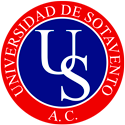
University of Sotavento
-
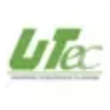
Technological University of Tulancingo
-
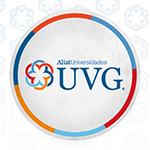
Valle del Grijalva University
-

Technological University of Nezahualcoyotl
-
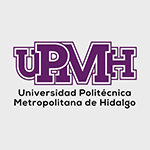
Metropolitan Polytechnic University of Hidalgo
-
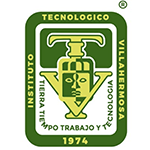
Villahermosa Institute of Technology
-
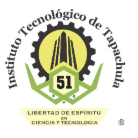
Instituto Tecnologico de Tapachula
-

Technological Institute of Parral

